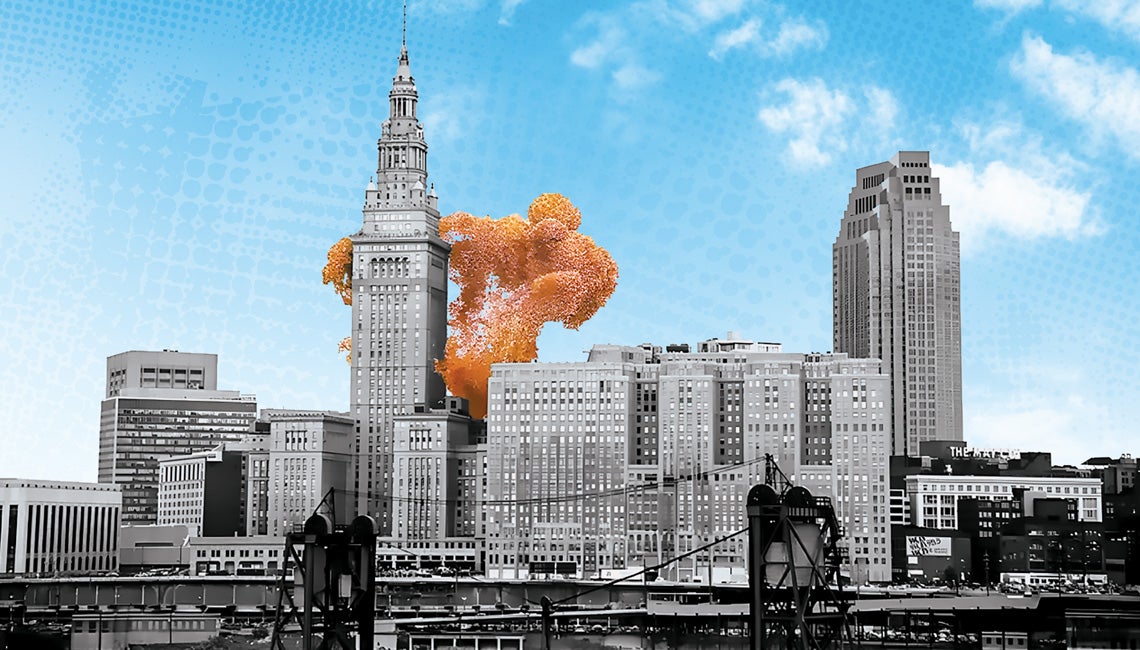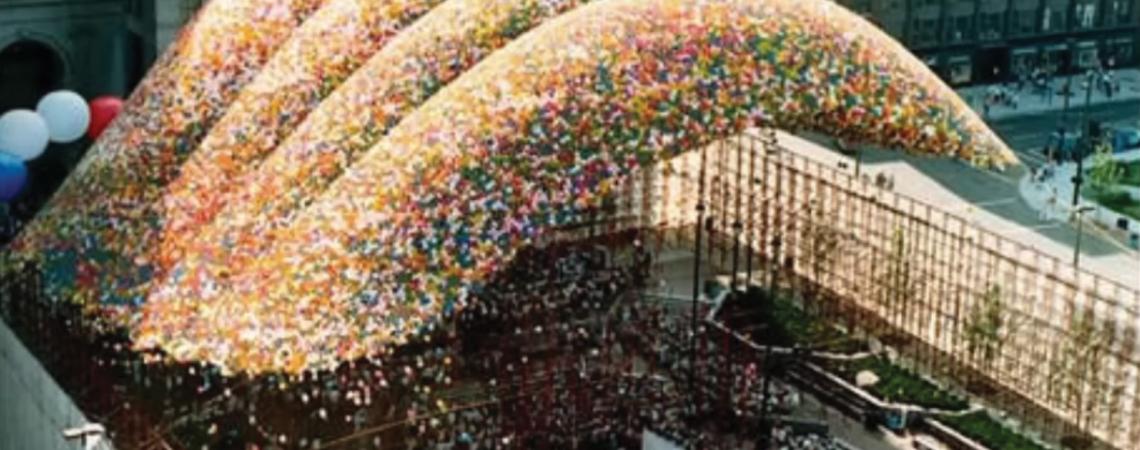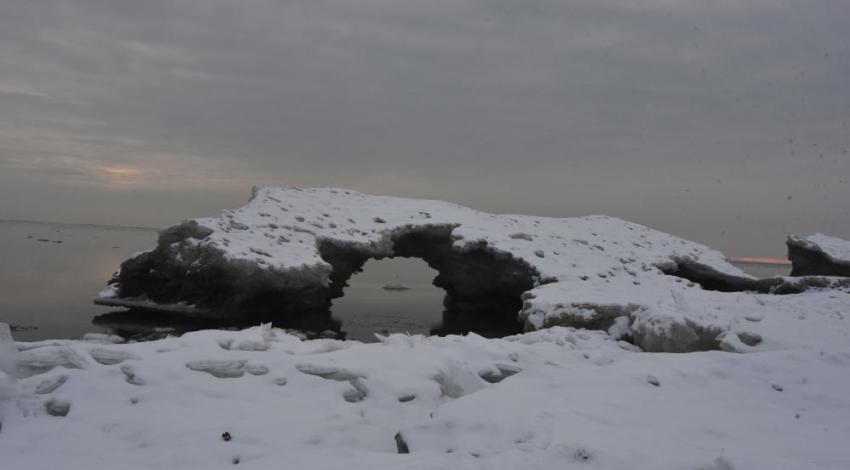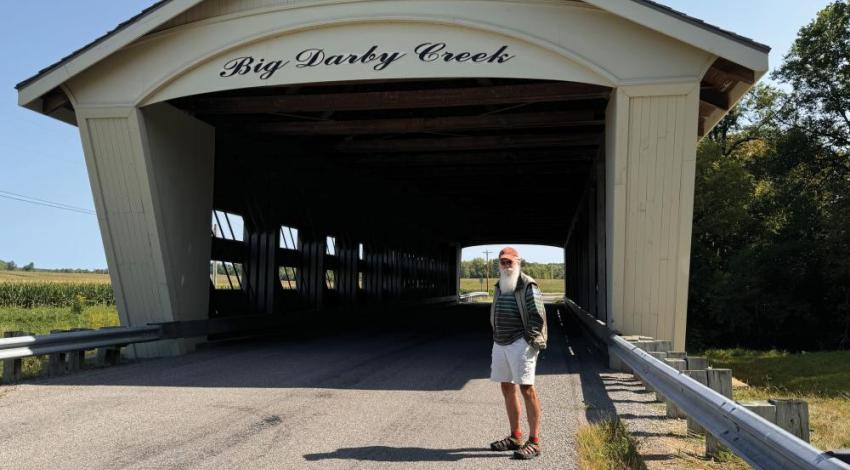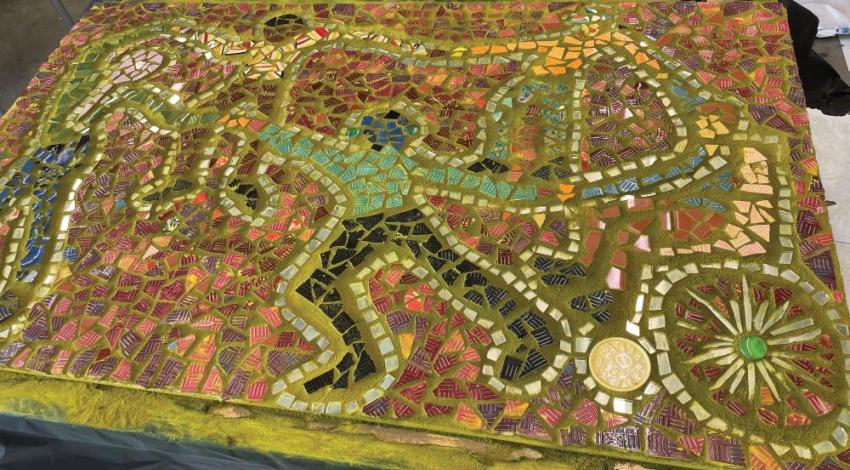The 1980s were tough economic times for Cleveland, the Buckeye State’s second-largest city. To a growing number of Americans, the Forest City was better known as the “Mistake by the Lake.” The embarrassment of the Cuyahoga River catching fire — more than once, and as recently as 1969 — due to pollution was still fresh in the city’s collective memory.
As a result of the decades of bad press, municipal leaders in 1986 were looking for a way to make Clevelanders proud of their city once again — to hopefully kick-start a general spirit of renewal.
The “largest-ever mass balloon release,” with 1,429,643 balloons launched.
They ultimately decided on a balloon release. But not just any balloon release; they wanted an event on a grand scale. The aggressive goal was to simultaneously release 1.5 million helium-filled latex ballons, setting a new world record that would be recorded in The Guinness Book of World Records.
Organizers went all-out for what was dubbed Balloonfest ’86. They hired noted Los Angeles businessman Treb Heining and his company, Balloonart by Treb — still fresh from the successful release he had put on for the 1984 Summer Olympics in L.A. — to put on the event.
Six months of planning went into the Cleveland release. Heining decided that an open-sided net canopy three stories high would be built to contain the balloons prior to launch. The massive canopy, the size of an entire city block, was constructed on Cleveland’s Public Square. Some 2,500 volunteers, mostly high-school students, worked for hours preparing the balloons.
As the number of balloons beneath the canopy steadily grew, so did the anticipation. The launch was scheduled for mid-afternoon on Saturday, Sept. 27, 1986, and by late morning, an estimated crowd of more than 100,000 people had gathered in downtown Cleveland.
But there was a problem. Local meteorologists began warning of a severe thunderstorm approaching over Lake Erie. Hurriedly, the release time was moved up, and then moved up again. At 1:50 p.m., to the cheers of the masses, the canopy opened and the multicolored balloons rose rapidly, swirling around the iconic Terminal Tower in a massive, spectacular, aerial display.
It was short-lived. The predicted thunderstorm and accompanying cold front hit at exactly that moment, and the result was chaos.
Instead of wafting out over the city as planned, most of the balloons were forced back to the ground by the strong downdrafts of the storm. Downtown streets were covered by tens of thousands of balloons, as was Cleveland harbor. Burke Lakefront Airport closed for half an hour as balloons descended on the runways. Traffic accidents were reported as drivers gawked at the balloons or dodged them on highways.
Balloons that had somehow avoided the severe downdrafts were blown as far away as Geauga County, 20 or more miles east. In the following days, thousands of balloons washed up on both the Ohio and Canadian shores of Lake Erie.
Despite modern accounts describing the event as a fiasco, in a way, it was a success. Newspaper accounts described the event in largely positive terms. The 1988 edition of The Guinness Book recognized the event as a world record, the “largest-ever mass balloon release,” with 1,429,643 balloons launched (the previous record, which had been set a year earlier, commemorated the 30th anniversary of Disneyland). The category has since been abolished.
And there can be no doubt that Cleveland’s fortunes have turned around significantly during the last 40 years. The city has reestablished its economic base, the waterfront has become a vibrant part of downtown, and the Cuyahoga River has been cleaned up, attracting kayakers, canoers, and anglers.
Today, Balloonfest ’86 is a vague memory in most Clevelanders’ minds, if they remember it at all. But on that fateful day, a quirk of the weather changed Cleveland history, reminding us that when it comes to making outdoor plans, Mother Nature always has the final say.
